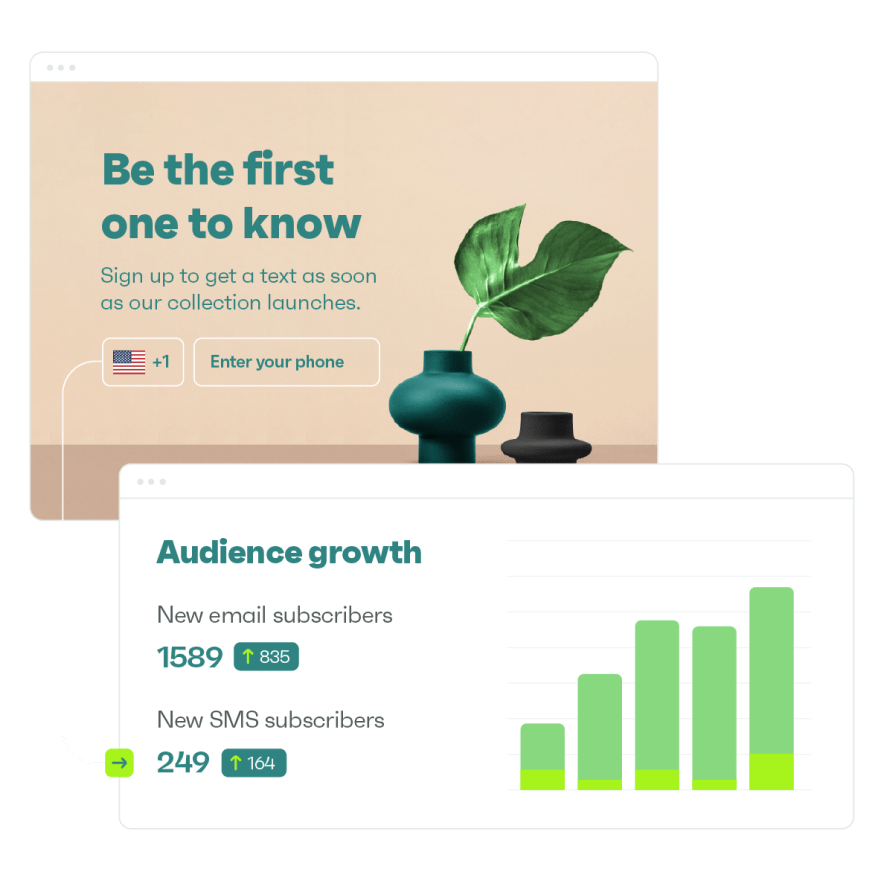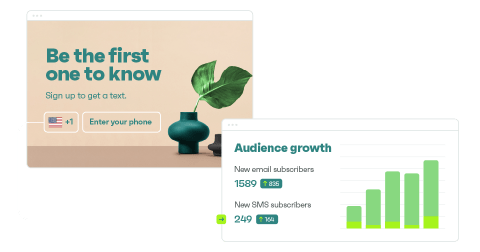Drive sales on autopilot with ecommerce-focused features
See FeaturesCustomer lifecycle segmentation: guide & examples [2024]
If you play your cards right, your customers will have a long and fruitful relationship with your brand and won’t just make one-time purchases. These customers go through various stages of interaction with your brand from first hearing about it to becoming brand advocates.
Reaching out to all customers, irrespective of where they are in this lifecycle with your brand, is a mistake you can’t afford to make.
That’s where customer lifestyle segmentation helps.
It allows you to connect with customers and prospects at different stages with relevant and targeted messaging at the perfect times.
In this guide, we’ll help you understand customer lifestyle segmentation, give tips to do it right, and provide examples to inspire you.
Let’s get started.
In this post:
- What is customer lifecycle segmentation?
- Benefits of customer lifecycle segmentation in marketing
- How to get started with customer lifecycle segmentation
- Customer lifecycle segmentation examples
What is customer lifecycle segmentation?
Customer lifecycle segmentation is the process of grouping customers based on where they are with their relationship with a company. It helps you reach out to customers with tailored emails or messages, based on their current relationship with your brand.
A customer’s lifecycle starts when they first hear about your brand and ends when they decide to end the relationship. Some common lifecycle stages are awareness, consideration, action/purchase, retention, loyalty, and advocacy.
Benefits of customer lifecycle segmentation in marketing
Customer lifecycle segmentation offers many benefits. Let’s take a look at some of the most important ones.
- More personalized marketing: By sending tailored messages to each segment, you can send personalized communications
- Better customer retention: As customers go through the various stages in the lifecycle, their needs change. Lifecycle segmentation helps you address this by sending relevant messages to each segment
- More targeted promotions: You can get higher conversion rates when you send promotional offers that cater to the specific needs of customers at a particular stage
- Relevant product recommendations: By analyzing a customer’s history with your brand, you can recommend the right products to them. This, again, helps drive more conversions
- Positive customer experience: When you send personalized and relevant communications to your customers, they feel like you care. This helps improve their experience with your brand
- Data-driven decision-making: Customer lifecycle analysis provides lots of useful data that you can use to make informed decisions, and this is useful in optimizing strategies to maximize customer lifetime value
How to get started with customer lifecycle segmentation
In this section, we’ll guide you through the process of segmenting customers based on their lifecycle stages. Here are the five broad steps we’ll discuss:
- Define lifecycle segments
- Collect customer data
- Get a marketing app with a lifecycle stages map
- Create automatic campaigns
- Test and improve
Let’s get right to it.
1. Define lifecycle segments
Though the customer lifecycle stages remain similar across industries, the actual segments may differ from business to business.
That’s because the best way to segment is by understanding how customers are interacting with a specific business. Since this is not consistent, nor are the segments.
In this section, we’ll cover some common lifestyle segments that are useful for ecommerce businesses.
Recent customers
These are customers who have recently bought something from your brand, and it includes both first-time and repeat buyers. Since these are active customers, you can encourage them to make repeat purchases via personalized recommendations.
Loyal customers
These are customers who buy from your brand repeatedly, either frequently or occasionally. They should have made at least one recent purchase to be a part of this category.
Since these customers trust your brand, cross-selling and upselling are great strategies for them.
Champions
These are loyal customers who have made several high-value purchases and one of them was recent. Your goal with these high-value customers should be to further foster loyalty through customer delight and exceptional customer service.
Customers who need nurturing
These are customers who bought once or twice but haven’t been active lately. With a little nudge and lucrative promotional offers, you can turn them into loyal customers.
High-potential customers
These are customers who either bought a few high-value items or made many average-price purchases. Upselling is a great strategy to nudge these customers to buy more high-ticket items from your brand.
At-risk customers
These are customers who bought from your brand in the past but have been inactive for a while. They often need a nudge to remind them about your brand, and a good way to do this is remind them of your value with an offer.
Can’t lose customers
These are the high-spenders who shopped a lot from your brand at some point but have been inactive lately. Inform them about your new products and offer incentives to turn them into loyal customers.
About to lose customers
They are customers who bought something in the past and have not been active in a long time. Some of them may even be one-time buyers. This is the most difficult segment to win back and requires the most persuasion to buy something.
Other ways to do segmentation:
Behavioral segmentation 101 [types, examples & stories]
Demographic segmentation: definition & examples [2024]
2. Collect customer data
For you to effectively utilize customer lifecycle segmentation for email marketing, you need an email list.
If you already have one, you can start the segmentation process immediately. If not, you need to use various lead-capture tactics to collect prospects’ email addresses and build an email list.
Using popups and opt-in forms on your website is a great way to build an email list. The Omnisend popups feature is perfect for creating high-converting popups to collect email addresses quickly.
You can offer gated content, discounts, or other incentives to encourage site visitors to provide their email information.
Check out this signup form that offers a 10% discount to anyone who signs up for the company’s newsletter and provides their email address:
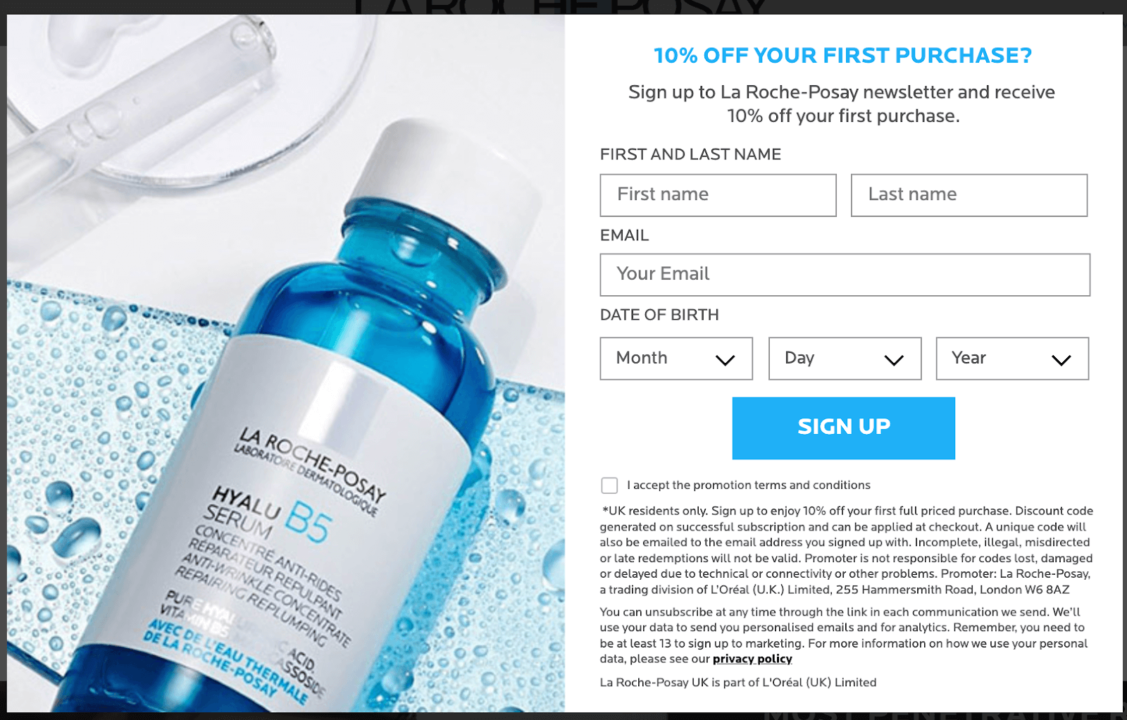
3. Get a marketing app with a lifecycle stages map
We’ve established that customer lifecycle segmentation is useful, but implementing it is not as easy as it sounds. Using a lifecycle marketing app, though, helps make the process simple.
Such tools often come with pre-built, ready-to-use segments of customer lifecycle maps that help you immensely. Omnisend, for example, offers a lifecycle stages map to help you segment your email lists easily.
Here’s a glimpse of what it looks like:
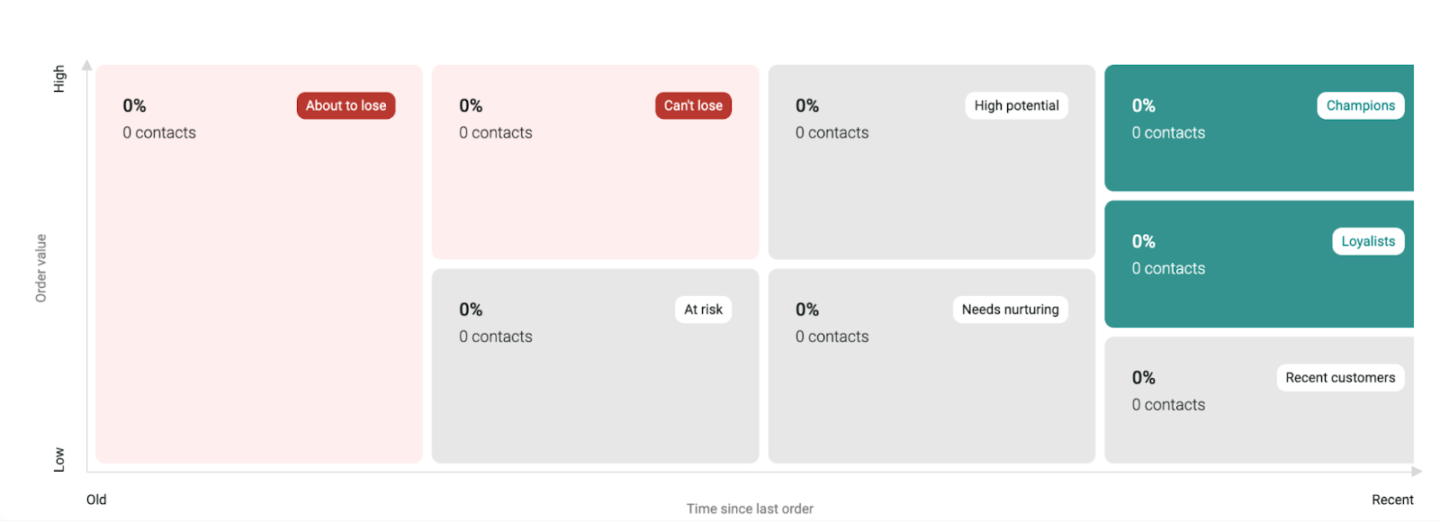
4. Create marketing campaigns for each segment
To really benefit from customer lifecycle segmentation, you must create targeted marketing campaigns for each segment. Depending on a customer’s relationship and interaction history with your brand, your marketing communications will change.
For example, a first-time buyer may require a gentle nudge to buy again but an inactive customer may be harder to win back.
By tailoring your marketing messages and offers to each segment, you can achieve much better results.
Here’s a quick reference table with campaign ideas for each segment, to get you started.
| Lifecycle segment | Examples of campaigns |
| Recent customers | — Thank you emails — Exclusive offers to encourage repeat purchase — Loyalty program invitations — Cross-selling and product recommendations |
| Loyal customers | — Referral program invitations with lucrative rewards — Exclusive offers and discounts — New product updates — Product refill reminders — Upselling and cross-selling |
| Champions | — Exclusive loyalty rewards, such as early access to sales — Personalized product recommendations and upselling — VIP tier loyalty rewards |
| Customers who need nurturing | — Offering discounts and offers to encourage purchases — Re-engagement and retargeting campaigns — “We miss you” emails |
| High-potential customers | — Cross-selling and upselling — Time-limited deals to drive quick sales — Paid advertising on multiple channels — Deals on bundled products |
| At risk customers | — Re-engagement and retargeting campaigns — “We miss you” emails — Lucrative deals to encourage repeat purchases |
| Can’t lose customers | — “We miss you” emails — Personalized product recommendations — Retargeting on multiple channels — Personalized discounts and offers |
| About to lose customers | — Lucrative discounts and deals — Reminders of product benefits that encouraged their initial purchase — New product promotions |
Helpful tips to create personalized campaigns:
25 thank you email templates & examples for ecommerce
Post-purchase emails: 6 examples & tips (+how to create)
5 customer loyalty email examples that work
5. Test and improve your campaigns
Once you’re done with all the steps above, you can execute the campaigns and measure the performance.
We recommend testing various offers and messaging copy for each campaign using A/B testing. This will help you understand each segment’s preferences and motivations better.
Also, use multiple channels to engage each segment and identify where they’re most active. Omnisned can help you run integrated email, SMS, and push notifications campaigns seamlessly.
Next, use Omnisend’s customer lifecycle stage map and email analytics to see how well each campaign performed. Draw insights from the data, optimize your strategy, and keep improving your marketing campaigns.
Lastly, send feedback forms and surveys to customers and ask them to share their experiences. This will provide you with further insights into their preferences to optimize your marketing campaigns.
Customer lifecycle segmentation examples
Now that you understand how to use customer lifecycle segmentation, let’s take a look at some examples to inspire your next campaign.
1. Island Olive Oil Company: An email for “at-risk” customers

Island Olive Oil Company used Omnisend to send automated emails to re-engage “at-risk” and “can’t lose” customer segments. It was able to achieve a 27% conversion rate for the former and $11.24 revenue per email (RPE) for the latter.
Above is an example of an email sent to at-risk customers. The generous 20% discount aims to win them back.
The use of tempting product images and direct buying links further nudges the readers toward buying the products, so it’s no wonder the campaign had such high conversion rates.
See what the company’s co-owner has to say about Omnisend’s lifestyle stages map.
The lifecycle stage map is an incredible opportunity for a small business. This is the kind of thing that, otherwise, takes a marketing team to be able to do. It’s a simple way to see our customers’ shopping or purchasing habits in one place, and it’s helped us to be able to target different groups.
Angèl Foster, Co-owner of Island Olive Oil Company
Read the case study to learn more: How Island Olive Oil uses lifecycle stages and automation to deliver the boutique touch
2. B-Wear: Promo offer for customers that need nurturing

B-Wear Sportswear switched to Omnisend and got two key benefits: seamless integration with BigCommerce, and the option to run integrated email and SMS campaigns.
With Omnisend’s lifecycle stages map feature, they were able to specifically target customers that needed nurturing. The email above is one example from the campaign.
It offers different discount rates for different categories of products, and includes direct links to the category pages. This allows recipients to click the category link that interests them the most, view the products, and use the discount.
Owing to this campaign, the company generated 40% of its entire revenue with Omnisend’s help.
It also targeted users who abandoned their carts and was able to achieve a 15% increase in the recovered revenue rate.
Check out the case study: How B-Wear Sportswear shapes marketing strategy with data
3. A re-activation workflow for “Can’t Lose” customers
The “can’t lose” customers are your most valuable customers who used to shop more often and/or spend more than your other customers, but haven’t purchased anything for a while.
One way to re-engage and reactivate these high-value customers is to send a series of emails tailored to their preferences.
Here are a few tips to set up a workflow to win back these customers:
- Show your customers that you missed them using the right tone and messaging. Ensure that your emails are not promotional. Instead, use subject lines that acknowledge that these customers haven’t shopped in a while and there’s a special offer for them to buy from your brand again
- Include a special discount or free shipping incentive (or test which works better) to strengthen the nudge
- Add personalized product recommendations — customers are 2.6x more likely to convert when recommendations are based on their purchase history
- Use multiple channels, including SMS and/or push notifications to increase your reach. Be mindful that subtlety is key as you don’t want to put off any customers with one-size-fits-all types of email blasts
Here’s an example of an email workflow set up using Omnisend. It shows A/B testing email and SMS channels in a reactivation workflow for customers in the Can’t Lose lifecycle stage.

4. Baking Steel: An online workshop invitation for regular customers

While re-engaging inactive customers is important, it’s also vital to engage your active customers. Baking Steel understands this and runs welcome series and post-purchase email campaigns for its regular customers using Omnisend.
The business also organized virtual events to engage loyal customers. The email above is one example of a “pizza hang” to share tips on making restaurant-like pizzas at home. It’s a great way to keep regular customers engaged and keep the brand top of their minds.
Baking Steel achieved great results with strategic email marketing. The welcome series emails drove a revenue per email of $15, and the post-purchase emails delivered an RPE of 214% more than before.
Check out the case study to learn the specifics: Baking Steel after Mailchimp: Complete reporting, 1-to-1 support, and increased sales
5. To’ak Chocolate: A cart recovery email for customers who left without buying
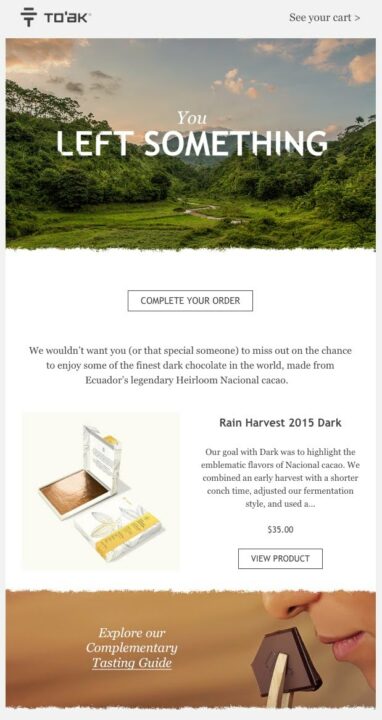
To’ak Chocolate uses Omnisend to run automated welcome series and cart abandonment emails. The image above is an example of a cart recovery email.
The email shows the product image and uses persuasive copy to convince the reader to complete their purchase. It uses two CTA buttons, one to complete the purchase and the other to check the product.
In case a recipient is unsure whether they’re buying the right product, the email also links to a tasting guide to help the decision-making process.
The brand got a 2,195% higher RPE from abandoned cart emails compared to promotional ones.
Read the success story to find the exact strategy it used: How To’ak Chocolate increased email-generated revenue by 460%
Improve your retention with customer lifecycle stages
Email marketing is only effective if you send the right messages to the right customers at the right times.
Customer lifecycle segmentation allows you to create tailored email campaigns based on a customer’s history with your brand. This allows you to use different promotional tactics to engage or re-engage customers.
Omnisend makes this segmentation easier for ecommerce businesses by providing ready-to-use segments. Explore its features and decide for yourself if it’s useful for you.
quick links
related features
No fluff, no spam, no corporate filler. Just a friendly letter, twice a month.
